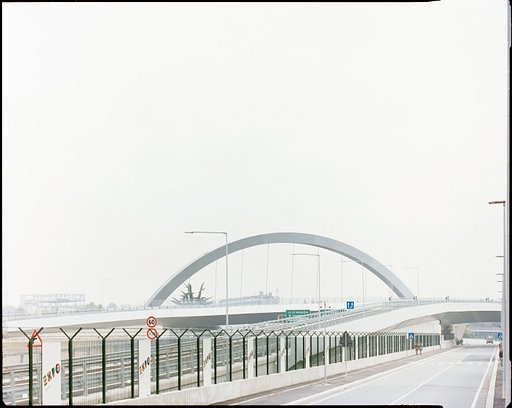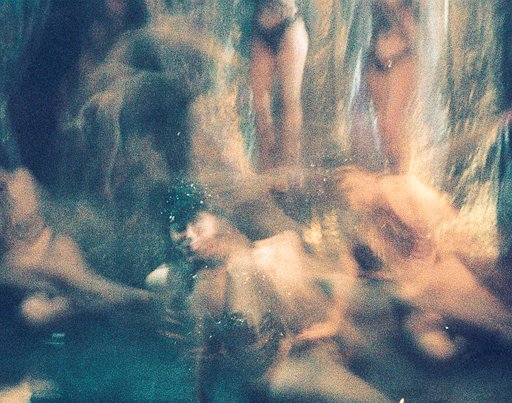On the Edge of Turkmenistan with Stefano Majno: The Silk Road
13 Share TweetItalian vagabond Stefano Majno is no stranger to remote and isolated places. As a traveler, he prefers the road less wandered – ancient locations and cities that influenced civilizations throughout history. This time, Stefano loaded up Lomography Color Negative 100 ISO 35mm film and Lomography Color Negative 400 ISO 35mm film to capture the ancient trade route that is the Silk Road. For many centuries, the Silk Road was the center of cultural, political, and mercantile interaction between Asia, Africa, and Europe. Now a UNESCO Heritage Site, Stefano visits the Silk Road and documents what it now looks like.
Hey Stefano, welcome back to the Magazine! You have already shared many wonderful adventures with us, but today tell us about the Silk Road. A voyage full of antiquities and charm. Why did you choose this particular destination?
I decided to roam the Silk Road between Uzbekistan and Kyrgyzstan because the Central Asian republic was still an unexplored area for me. I traveled a total of 3200 km overland in a month: from the Aral Sea, or better, from today's Aralkum desert to Kyrgyzstan near the border with the Chinese province of Xinjiang. On the way crossing fascinating and ancient cities like Samarkand and venturing up to small Yurts camps at 3000 meters in Kyrgyzstan.
What equipment did you bring along and how did you move around?
I usually travel with my inseparable Contax G1 that mounts a 28mm 2.8 Zeiss lens. It is a versatile camera that gives a certain security on results in all light conditions. I have traveled the whole route using all available means, in most cases: bus, marshrutkas, and shared taxis.
You embarked on one of the most striking tours from Uzbekistan to Kirghizistan, how was it?
The itinerary expresses the remarkable landscape diversity of Central Asia than in the common imagination is limited to desolate and deserted steppes, but is much more varied among high altitude pastures, flatlands, lakes, and endless walnut woods.
You pictures are bright, crisp and all-around beautiful. Which aperture did you use? What would you recommend as ISO?
I used almost only 100 ISO films, I really appreciate the vividness of the colors for daylight exposures and some 400 ISO to allow me to take pictures at sunset when the light is weaker.
We love the portraits you took of locals, all these wonderful faces you have met — real and genuine moments of life. Did you have any chance to speak with them?
Yes, sure! I always ask for permission before photographing and in general. This allows me to create a first communication bridge. About the picture with the gentlemen who play billiard, I was very curious because pool is my passion. I tried to understand what rules are in use in Kyrgyzstan but I have to be honest, I didn’t understand so much!
The foreign architecture is simply stunning – what is that building sticking out the mountainside?
Tashkent is a relatively new city, rebuilt completely after the terrible earthquake of 1966. The inconsiderate use of concrete in brutalist architecture creates a contrast with the medresses and mosques, the essential and cold lines don't easily fuse with minarets and turquoise domes.
Uzbekistan, Kyrgyzstan, and Kazakhstan are three of the five ex-Soviet states. Only gaining independence in the early 90s, after more than a hundred years of Russian occupation. Is there a gap between these cultures? Did you feel any difference?
The Russian occupation left indelible marks eradicating local culture and rebuilding it according to the communist dogma. Under the political point of view, not so much has changed since the end of the Soviet Union, in fact, four of the five Central Asian republics are still governed by the same president (or a direct successor) elected in the early 90's, they are clearly dictatorships masked as democracies. I would like to recommend an interesting book Sovietistan by Erika Fatland. It is a lucid analysis of the current situation in the form of a lovely travel book.
What inspired you to go on this trip?
The main objective of my trip was to reach Karakalpakstan near the border with Turkmenistan, today the region is the witness of the greatest ecological disasters caused by man. The city of Muynaq, once the largest coastal city on the Uzbek side of the Aral Sea is a terrible example of how it can be possible to destroy and radically change the ecosystem in a very short time frame. Today what remains of the Aral Sea is located 120 km far from the former port area of the city and the fishing fleet rusts abandoned in the desert.
Any advice for fellow photographers setting off of their own trips along the silk road?
First for all, having a Russian language base and more choosing a pair of very comfortable shoes!
Thank you Stefano for sharing your striking experience. If you're interested in his work, check out his website and on Instagram.
2018-11-02 #persone #luoghi #adventure #lomography-film #silk-road


































Nessun Commento